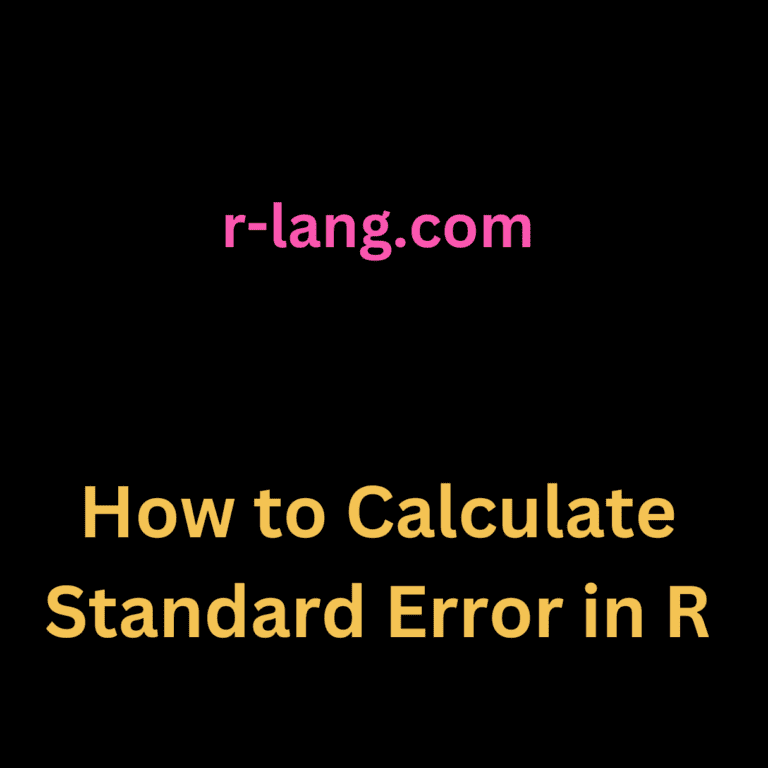Standard Error (SE) measures the variability or dispersion of the sample mean estimate of a population mean.
Here are three ways to calculate standard error in R:
- Using sd() with length()
- Using the standard error formula
- Using std.error() from plotrix package
Here is the basic formula:
where:
- = sample standard deviation
-
n = sample size
Method 1: Using sd() with length()
The easiest way to calculate the standard error is to divide the standard deviation by the square root of the sample size.
Syntax
sd(data)/sqrt(length((data)))
Example
# vector
rv <- c(11, 21, 19, 46)
# calculate standard error
print(sd(rv) / sqrt(length((rv))))
# Output: [1] 7.564996Method 2: Using the standard error formula
This is a manual way of implementing the first method. You can use the formula above if you have the standard deviation and the sample size.
Syntax
sqrt(sum((vec-mean(vec))^2/(length(vec)-1)))/sqrt(length(vec))
Example
# vector
rv <- c(11, 21, 19, 46)
# calculate standard error
s_err <- sqrt(sum((rv - mean(rv))^2 / (length(rv) - 1))) / sqrt(length(rv))
# print the standard error
print(s_err)
# Output: [1] 7.564996Method 3: Using std.error() from ‘plotrix’ package
The plotrix add-on package includes the std.error() function, which can also calculate the standard error of the mean.
Syntax
std.error(x,na.rm)Parameters
| Argument | Description |
| x | It is a vector of numerical observations. |
| na.rm | It is a dummy argument to match other functions. |
Example
library("plotrix")
rv <- c(11, 21, 19, 46)
op <- std.error(rv, na.rm = TRUE)
print(op)
# [1] 7.564996That’s it!

Krunal Lathiya is a seasoned Computer Science expert with over eight years in the tech industry. He boasts deep knowledge in Data Science and Machine Learning. Versed in Python, JavaScript, PHP, R, and Golang. Skilled in frameworks like Angular and React and platforms such as Node.js. His expertise spans both front-end and back-end development. His proficiency in the Python language stands as a testament to his versatility and commitment to the craft.




